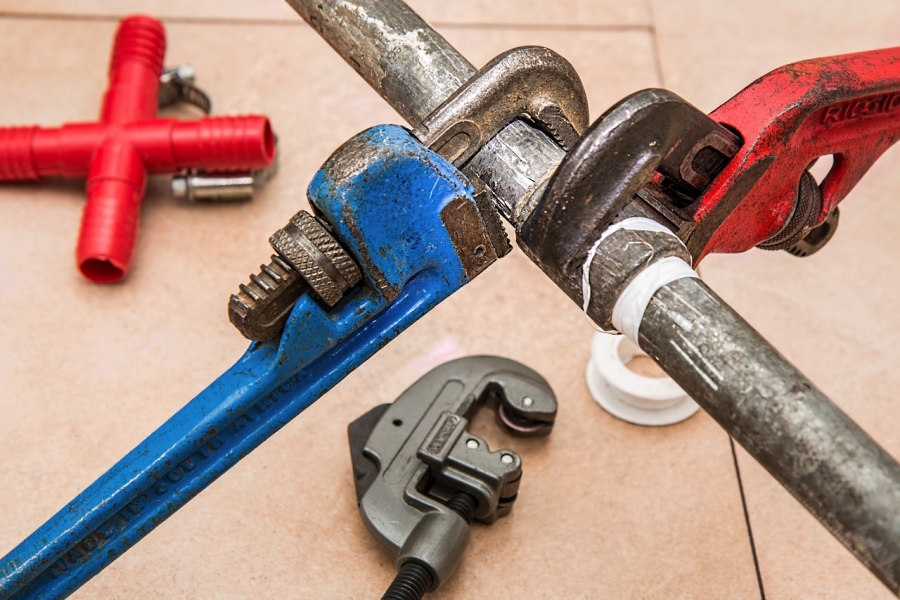Have you ever experienced a clogged sink? It can be frustrating when water starts backing up, and you must deal with dirty water and unpleasant smells. If you ever experience what should you do? Luckily, we have provided a guide about unclogging a sink.
Common Causes of Clogging
Clogging may result from the following:
Buildup of debris
One of the main causes of sink clogging is the buildup of debris and food particles in the drain. Over time, small bits of food, grease, and soap can accumulate in the drain pipe, leading to a blockage.
This is particularly common in kitchen sinks, where food particles and cooking oils are frequently washed down the drain.
Accumulation of Soap Scum and Hair
The other common cause of sink clogging is the accumulation of hair and soap scum in the bathroom sink. Hair, soap, and other grooming products can easily get stuck in the drain, leading to a blockage. This is why cleaning out the drain regularly is important to prevent clogging.
Hard Water Deposits
In addition, hard water deposits can also contribute to sink clogging. Minerals in hard water can accumulate on the inside of pipes, gradually reducing the diameter of the pipe and leading to blockages. This is more common in areas with hard water.
Tree Roots
Tree roots can also cause sink clogging. If you have an outdoor drain, tree roots can grow into the pipe, causing damage and blockages. This is why it’s important to have outdoor drains inspected regularly and to avoid planting trees near drainage systems.
Step-By-Step Guide on Unclogging a Sink
Have you ever found yourself standing in a pool of water in front of your sink, wondering how you will unclog it? It’s a common problem many people face, but don’t worry. We will give you a step-by-step guide on how to unclog a sink.
Step 1: Assess the situation
Before you start unclogging your sink, you must assess the situation to see what’s causing the blockage. Is it a buildup of hair, soap scum, or food particles? Knowing what’s causing the clog will help you choose the right method for unclogging it.
Step 2: Remove any visible debris
If you can see any debris in the sink, such as food particles or hair, remove it with a pair of gloves or tweezers. This will help prevent the clog from getting worse.
Step 3: Try a plunger
If the clog is caused by something that can be moved, such as hair or soap scum, a plunger might be all you need to dislodge. Ensure there is enough water in the sink to cover the plunger, then place it over the drain and push and pull it up and down for a few minutes. This should create a vacuum that will dislodge the clog.
Step 4: Use a drain snake
A drain snake might be the next step when the plunger doesn’t work. A drain snake refers to a long, flexible wire you can insert into the drain to dislodge the clog. Pick and Insert the snake inside the drain and begin to twist it around until you feel resistance, then pull it out slowly. Repeat this process until the clog is removed.
Step 5: Try a mixture of baking soda and vinegar
If the clog is caused by grease or food particles buildup, a mixture of baking soda and vinegar might be the solution. Pour a cup of baking soda down the drain, followed by a cup of vinegar. Cover the drain using a cloth or stopper and let it wait for 30 minutes. Then, you can flush the drain using hot water.
Step 6: Call a plumber
If none of these methods work, it’s time to hire a plumber. A professional plumber will have the tools and expertise to unclog your sink quickly and efficiently.
Conclusion
Unclogging a sink can be a frustrating and time-consuming task, but with the right tools and techniques, it is a task that can be accomplished relatively easily. It is important first to identify the cause of the clog, whether it is due to food particles, hair, or other debris, and then choose the appropriate method to remove it. Some effective methods include using a plunger, pouring hot water and baking soda, or using a drain snake. Regular maintenance includes pouring boiling water down the drain and avoiding pouring grease or oil down the drain, which can also help prevent clogs from forming. By taking the tips above, homeowners can keep their sinks running smoothly and avoid costly repairs or replacements.
Whether you’re faced with a kitchen or bathroom sink clog, it’s important to remember that prevention is key. Regular cleaning and inspection of your drainpipes, as well as being mindful of what goes down the drain, can save you time and money in the long run. And if all else fails, don’t hesitate to seek the help of a professional plumber who can tackle the problem efficiently and effectively.







